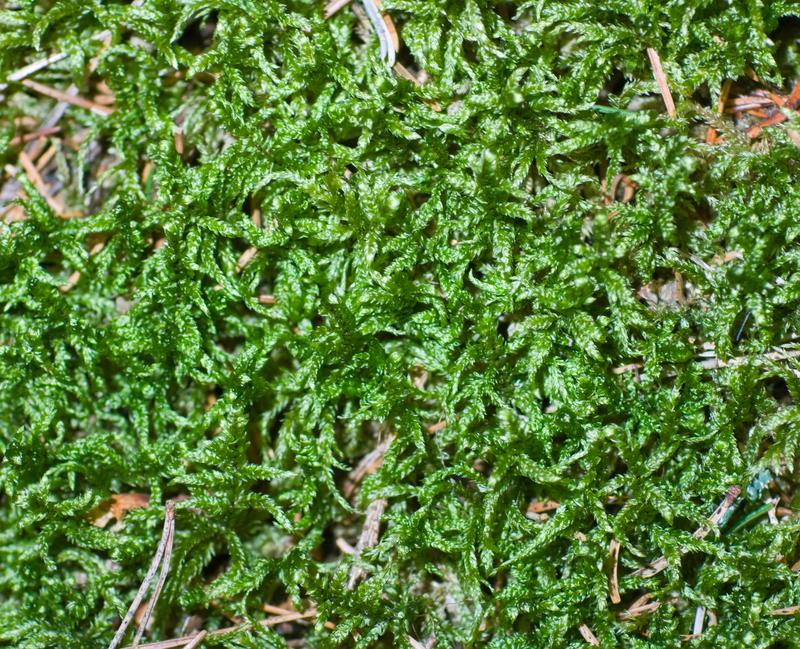Arm Yourself with 3 Crucial Tips for Tackling Weeds
Posted on 03/06/2025
Arm Yourself with 3 Crucial Tips for Tackling Weeds: Master Weed Control in Your Garden
Weeds - those persistent, unwelcome plants - can quickly take over any garden or lawn, robbing desired plants of water, nutrients, and light. Whether you are an avid gardener or simply enjoy a tidy outdoor space, learning effective weed control techniques is essential. In this comprehensive guide, we'll equip you to beat the botanical bullies with three vital strategies for tackling weeds. Discover the science behind weed growth, learn practical prevention methods, and explore proven removal tips to create an enviable, weed-free environment.

Understanding Weeds: Why Is Weed Control Important?
Weeds are more than just unsightly; they compete aggressively with your chosen plants for resources, can harbor pests and diseases, and even disrupt entire garden ecosystems. Some can produce thousands of seeds per square meter, guaranteeing their stubborn return every season. That's why mastering weed management is a crucial skill for every gardener and homeowner.
- Resource Competition: Weeds steal precious sunlight, water, and soil nutrients from your garden plants.
- Pest and Disease Hosts: Many weeds provide habitats for pests and carriers for plant diseases.
- Rapid Reproduction: Weeds, such as dandelions and crabgrass, spread easily by seeds, roots, and runners.
Let's arm you with three crucial weed-fighting strategies that will transform your weed management techniques and help your garden flourish.
1. Prevention: The First Line of Defense in Weed Management
The most effective weed control begins before weeds even have a chance to take root. Employing preventative weed control measures is a proactive way to ensure your soil and plant beds remain clear.
Mulching: Nature's Weed-Blocking Blanket
One of the easiest and most eco-friendly ways to suppress unwanted plant growth is through mulching. Applying a generous layer of organic mulch - such as bark chips, straw, or shredded leaves - over exposed soil blocks sunlight, preventing weed seeds from germinating.
- Suppresses Growth: A 2-4 inch layer is usually enough to smother weed seedlings before they emerge.
- Retains Moisture: Mulch helps soil stay hydrated, benefiting your plants while making weed survival harder.
- Improves Soil Structure: As organic mulch breaks down, it enriches soil health over time.
Tip: Refresh mulch annually, and avoid piling it directly against plant stems to prevent rot.
Landscape Fabric & Barriers: Physical Obstacles for Weeds
For long-term weed prevention, especially in new or heavily weed-prone beds, landscape fabric or weed barriers can provide an extra layer of protection. These materials allow water and air to reach the soil while stopping weeds from popping through. Covering fabric with an additional layer of mulch marries practicality with aesthetics.
Proper Lawn and Garden Care Practices
- Dense planting: Fill empty spaces with ground cover or closely spaced plants to crowd out weeds.
- Regular mowing: For lawns, maintain a mower height that shades the soil and discourages weed seeds from sprouting.
- Healthy soil: Regularly amend soil to keep it rich and fertile for your desired plants, making it less inviting for weeds.
2. Early Detection and Removal: Dealing with Weeds Before They Take Over
No matter how diligent you are, some weeds may slip through barriers or arrive via wind, water, or wildlife. The second crucial strategy is early intervention - catching and removing weeds as soon as they appear prevents small problems from becoming major infestations.
Hand-Pulling and Digging: Manual Removal Methods
Manual weed removal is still one of the most effective techniques for home gardens, especially when dealing with isolated weeds or delicate crops.
- Pull after rain: Soil is looser and roots come up more easily when damp.
- Grab close to the root: Aim to extract the entire root system; many weeds regenerate from fragments left behind.
- Use the right tools: A hand fork or dandelion weeder can ease removal of deep-rooted varieties.
- Inspect regularly: Walk your garden weekly; young weeds are easier to remove and haven't set seed.
Pro tip: Avoid shaking soil full of seeds back into the garden. Dispose of flowering or seeding weeds offsite, not in compost.
Cultivating and Hoeing: Disrupting Weed Seedlings
A sharp hoe sliced just beneath the soil surface can sever young weeds before they become established. Cultivating or lightly disturbing the soil in your beds, especially in early spring, uproots weed seedlings and leaves them to dry out in the sun.
- Do it early: The smaller the weed, the easier it is to eradicate.
- Be gentle: Excessive tilling can bring dormant weed seeds to the surface.
Spot Treatment for Stubborn Weeds
Some perennial weeds, such as bindweed or nutsedge, can be notoriously persistent. For these, repeated removal or spot treatments with a targeted approach (such as vinegar-based sprays or carefully applied herbicides) may be necessary. Always use such solutions judiciously and according to label instructions to avoid harming desirable plants and pollinators.
3. Long-Term Management: Outlasting the Weeds
The final tip for tackling weeds effectively is adopting a sustainable, long-term management plan. This means going beyond a single round of weeding and instead, developing ongoing habits that suppress weeds year after year.
Integrated Weed Management (IWM): Combining Methods for Maximum Impact
The most successful weed control regimens blend physical, cultural, and chemical strategies where appropriate. This is known as Integrated Weed Management and is recognized as the gold standard by horticultural experts.
- Rotate crops and ornamentals: Changing the arrangement disrupts weed life cycles.
- Sow cover crops: In unused beds, fast-growing crops like clover or rye fix nitrogen and suppress weeds naturally.
- Monitor and adapt: Keep records of what weed control methods work, and tweak your approach seasonally for best results.
Nourish Your Soil for Healthier Plants--and Fewer Weeds
Healthy soil supports lush, vigorous plant growth, which in turn crowds out opportunistic weeds. Regularly adding compost and organic matter boosts soil fertility and microbial activity, making it tougher for weeds to become established.
- Test soil every couple of years to correct pH imbalances and ensure nutrients are adequate.
- Practice crop rotation and diversify plantings to prevent soil depletion.
Smart Herbicide Use (When Necessary)
While many gardeners aim to garden organically, sometimes invasive or dangerous weeds (like poison ivy) require careful herbicide application. Always follow label instructions exactly, focus on targeted application, and consider natural alternatives first. Never use herbicides near water sources or on windy days.
Bonus: Natural & Eco-Friendly Weed Control Techniques
If you're seeking natural methods for removing weeds or want to minimize harsh chemicals, here are a few extra tips to help protect both your garden and the environment.
- Boiling water: Pour directly on pavement or driveway weeds for a quick, chemical-free kill.
- Vinegar-based sprays: Effective on young weeds; repeat as needed.
- Corn gluten meal: Can be used as a pre-emergent to block weed seeds (avoid if planting desired seeds).
- Solarization: Cover moist soil with clear plastic sheeting in summer to "bake" weed seeds out of the top layer.

Frequently Asked Questions About Tackling Weeds
When is the best time to remove weeds?
The best time is early and often. Young weeds pulled after rain or watering are easier to remove and haven't had a chance to set seeds, making your job easier season after season.
Are homemade weed killers safe for my soil?
Natural options like vinegar and boiling water are generally safe for spot treatment but can harm nearby plants if not applied carefully. Always test first on a small area and avoid indiscriminate spraying.
Can I compost pulled weeds?
You can compost young, non-flowering, non-seeding weeds. Avoid composting invasive weeds, roots, or anything with seeds to prevent accidental spreading.
Conclusion: Your Garden's Defense Against Weeds
To summarize, the key to tackling weeds effectively lies in a multi-layered approach: prevent weeds from taking hold, act quickly to remove them, and adopt smart, ongoing weed management tactics. With these three crucial tips:
- Prevention (mulch, barriers, dense planting),
- Early detection and removal (hand-pulling, hoeing, spot-treating), and
- Long-term weed control (healthy soil, crop rotation, integrated strategies),
you can transform your lawn and garden into a vibrant, thriving, and weed-free space.
Ready to become a master of weed control? Arm yourself with these proven tactics, and watch your hard work blossom into a lush, beautiful garden you'll enjoy all season long.

